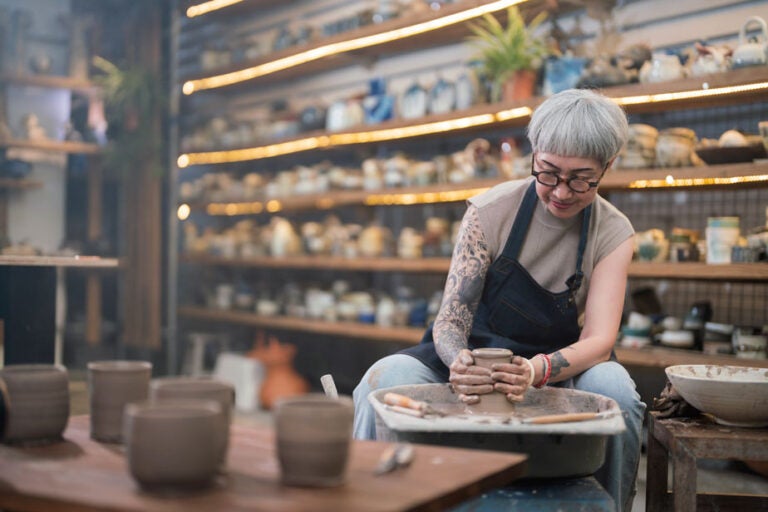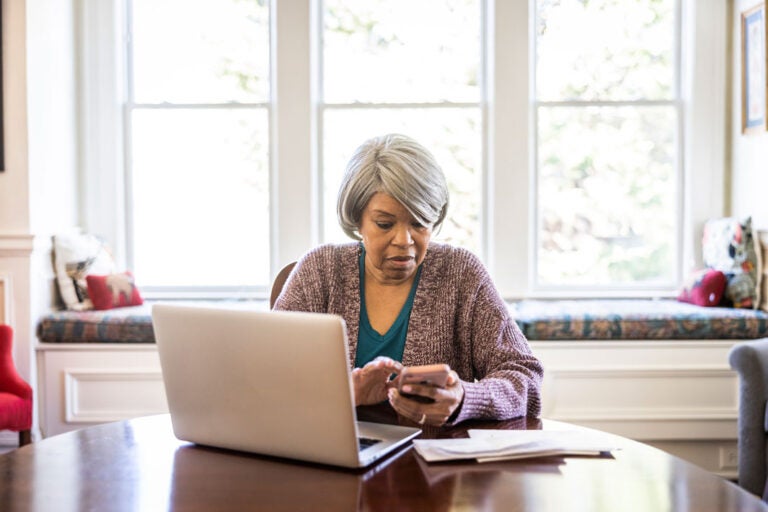The benefits of establishing an art practice in retirement extend well beyond creative satisfaction. According to a National Endowment for the Arts study, those 65 and older who engaged in weekly art programs enjoyed better health, fewer doctor visits, and used less medication than those who didn’t.
“Creative art practices can promote emotional well-being and provide a means for coping with adjustments during significant life transitions,” says Emily Sharp, an art therapist. She adds that practicing art with a group can also provide a supportive social network, build community, and help reduce feelings of loneliness and isolation.
Retirement presents the perfect time to explore your creative side. If you have no art experience or background, how do you start? Here’s advice from the experts on the benefits of establishing an art practice in retirement.
Decide What Interests You
The first step is determining where your interests lie. Perhaps you want to learn more about something you’ve dabbled in before by taking classes that will elevate your skills. Or, you might be connecting with your artistic side for the first time.
Remember what inspired you as a child. “Our natural interests may be lying dormant inside us because someone snatched the crayons out of our hands when we were daydreaming as a child in a classroom. Or, we may have been told to color inside the lines when all we wanted was to fill the paper with colorful scribbles,” says Mary Potter Kenyon, a therapeutic art coach and author of “Called to Be Creative: A Guide to Reigniting Your Creativity.”
Start Small
Another approach is to start at home with the familiar: colored pencils, markers, watercolor paint, and paper that are readily available. Sharp recommends loosening up with a scribble drawing. Without taking your pencil off the paper, draw loose, large loops with lines that cross over each other. Color the spaces you’ve created with colors that interest you, or that you think look good together, she says. Sketch or paint after you’ve warmed up.
Caroline Edasis, an art therapist who is now assistant vice president of resident engagement at Mather, a nonprofit that helps older adults age well, suggests documenting what’s around you. “Use journaling, poetry, photos on your smartphone, sketches, or collages to start capturing the positive events, experiences, people, or even meaningful objects in your life. Be an intentional, active, and curious observer,” she says.
Learn your art form’s basics from YouTube videos and online courses for beginners. When you’re ready to advance, consider registering for an in-person course for the educational, social, and mental health benefits that learning in a group setting offers.
Experiment With Different Art Forms
Don’t abandon art altogether if you don’t like the activity you’ve started, though. In the same way that you might have to try a few yogurt brands to find one you like, it’s likely that you’ll need to experiment with art forms before you identify an activity that resonates with you.
In fact, even if you enjoy the first thing you try, consider other options, too. “Experimentation will help you to get to know your inner artist better,” says Sharp.
“Just make sure you don’t start by taking a class that’s too advanced, so you won’t be discouraged,” adds Adrienne Wyman, the former art coordinator of senior-living community Goodwin Living, where she is now a sales counselor.
Focus on Process, Not Perfection
Just as you might need to experiment a bit to find the right creative fit for your soul, you might also need to stifle your competitive spirit. By the time we retire, most of us have become proficient at what we enjoy doing, so working at a beginner level might feel strange. But creating art and enjoying the benefits it brings isn’t about what’s right or wrong, best or worst. It’s about the process, not the product. Sharp cautions new artists to shift their focus from performance-based expectations to simple enjoyment of their creative expression.
“Embrace the idea that every artistic endeavor is an opportunity to learn and improve rather than a test of innate talent,” she says. With that in mind, she advises setting realistic goals for your art practice, such as committing to spending an hour a day working on it or attending an in-person class every week.
Let go of the idea that all you need to create art is talent, too, cautions Wyman. “Even Michelangelo and DaVinci were taught. Don’t compare yourself to anyone, especially someone who has been doing something for years,” she says.
Forget any preconceived notions of what constitutes “art” and just have fun with it, advises Kenyon, adding, “It’s exciting to try new things, and it’s good for us to stretch our creative muscles. How else can we discover what activities we could get lost in?”
Seniority is published by Finance of America Reverse LLC. The views expressed in this publication are those of the author alone and do not necessarily reflect the views and opinions of Finance of America Companies. This article is intended for general informational and educational purposes only and should not be construed as financial or tax advice. For more information about whether a reverse mortgage may be right for you, you should consult an independent financial advisor. For tax advice, please consult a tax professional.




